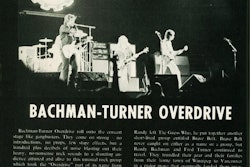Fuzzy Picture
CSA and HOS issues will continue to evolve long after public release
Getting this issue of Truckers News ready for publication was a challenge. Specifically, putting the news section together was difficult because there were so many important issues unresolved at press time.
First, the Federal Motor Carrier Safety Administration pushed back implementation of its new CSA 2010 safety program — or the “Compliance, Safety, Accountability” system, as it’s now known — until Dec. 12, almost a full week after we went to press. This came on the heels of three industry groups, consisting of small trucking and expediting fleets, filing a lawsuit to block public disclosure of certain carrier data. And while not part of the suit, the American Trucking Associations pressed FMCSA to make several last-minute changes to the program. All of this left the CSA picture a little fuzzy. The assumption is that FMCSA will have launched CSA by now, but it isn’t guaranteed.
Also, according to a statement made by FMCSA Administrator Anne Ferro at the International Commercial Driver Conference on Health and Wellness in Baltimore on Nov. 8, she expected the White House to release the new hours-of-service proposal by the end of November. Well into the first week of December, we were still waiting for the Office of Management and Budget to clear the rule.
ATA released a white paper on an accompanying website, www.safedriverhours.com, in early December urging the government to keep the current hours rule in place. The trucking group maintains the industry has been safer since the current rule was enacted seven years ago. One of the key statistics ATA points to is the 33-percent reduction in truck-related fatalities under the rule. Not only is ATA calling for the retention of the rule, but also greater sleeper-berth flexibility.
“When viewed against that sterling safety record, it seems plain that DOT’s willingness to reconsider the HOS rules has almost everything to do with politics and little or nothing to do with highway safety,” ATA said.
Drivers are paid by miles and regulated by hours. Under this system, the motivation will always be to run as many miles as possible.
Like most in the trucking industry, ATA feels the upcoming HOS proposal will include a reduction in driving time and a longer reset period for drivers. These revamped provisions would cost the industry more money by requiring more inexperienced drivers to haul freight.
Randy Grider is editor of Truckers News. He is the son of a career trucker and holds a CDL. Write him at [email protected].“Moreover, any changes are sure to be enormously expensive for trucking and the economy. Just two years ago, in Nov. 2008, the agency estimated an annual cost of over $2.25 billion to the industry if the daily maximum drive time was reduced by one hour and the 34-hour restart provision was significantly changed,” the white paper charges.
The Obama administration agreed to revisit the hours rule last year when officials at the U.S. Department of Transportation signed a settlement agreement with a coalition, including Public Citizen and the International Brotherhood of Teamsters, that sued FMCSA. The DOT’s obligation was to have FMCSA publish a new proposed rule in fall 2010 and finalize a rule by July 2011.
By releasing the white paper, ATA must feel it has some hope of last-minute influence on retaining as much of the current rule as possible.
Both CSA and the HOS issue have far-reaching potential to impact trucking for years to come. It would seem only fair to wait longer for officials to get them right before rolling them out. But we know both are political in terms of how you view them.
It would be unrealistic to think CSA will be implemented and roll forward with no challenges. It is a wholesale change in the safety compliance system, and many have questioned its fairness to drivers and carriers alike.
As for the hours rule, it’s become everyone’s favorite target. No matter what the rule does, it will spur litigation. It’s a broken system that everyone attempts to mold to fit their ideology.
We always go back to the root cause of the problem. Drivers are paid by miles and regulated by hours. Under this system, the motivation will always be to run as many miles as possible.
Perhaps projected wage increases, (see cover story, p. 18, for an examination of the potential upside of the new regulations) will help make the changes more palatable for drivers. Regardless, because we have grown accustomed to regulatory political upheaval, the overall picture may remain fuzzy for months to come.










